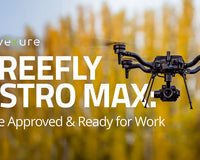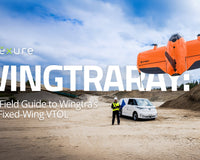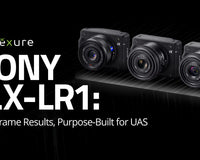In the early hours before dawn on September 14th, 2024, a tense rescue operation was underway in the dense woods of Ponchatoula, Louisiana. Ten-year-old Peyton Saintignan had mysteriously vanished from her home, leaving her family and local authorities in a desperate race against time. The surrounding forest, thick with underbrush, was a daunting environment for searchers combing the area by foot.
As hours passed with no sign of her, the search team turned to a critical tool: a thermal drone. Flying just above the treetops, the drone’s thermal camera swept across the dark landscape, picking up even the faintest heat signatures. Then, finally, a warm shape appeared – Peyton’s small figure was found lying motionless on the forest floor. From above, it was impossible to tell if she was simply sleeping or if something more serious had occurred. As the team closed in on her location, relief washed over them: Peyton had sleepwalked, was alive, unharmed, and soon safely reunited with her family.
Peyton’s story underscores the life-saving role of thermal drones in SAR operations. By providing real-time thermal imagery,, these tools give rescuers vital information that traditional search methods often can’t provide alone.
Why Thermal Drones are Essential in SAR Operations
Equipped with specialized thermal sensors, thermal drones detect infrared radiation emitted as heat, revealing otherwise invisible details in dark environments.

The Science Behind Thermal Imaging
Thermal imaging operates within the infrared spectrum of the electromagnetic field, just beyond the visible range. While the human eye can only perceive light wavelengths between 400 and 700 nanometers (like the colors in a rainbow), thermal cameras capture longer wavelengths—between 8,000 and 14,000 nanometers. These wavelengths correspond to heat emissions, meaning that thermal cameras can visualize even faint sources of heat against cooler backgrounds.
In search and rescue, this is invaluable. A human body emits heat at roughly 98.6°F, and a thermal sensor can distinguish this heat signature from a colder forest floor or rocky terrain. By translating heat levels into visual gradients, thermal sensors provide clear, high-contrast images, making it easier for SAR teams to locate individuals.
Thermal Imaging vs. Night Vision: A Key Difference
Unlike night vision, which amplifies available light, thermal imaging relies solely on heat emissions and is unaffected by ambient light levels. Night vision cameras can be useful in low-light conditions but are often rendered ineffective in total darkness or dense fog where little to no light is present. Thermal drones, on the other hand, detect heat directly, allowing SAR teams to “see” through smoke, heavy fog, and complete darkness – conditions that often hinder traditional SAR efforts.
SAR-Specific Benefits of Thermal Drones
- Rapid Aerial Reconnaissance: Thermal drones can survey large areas from above, significantly faster than ground teams. This means responders can cover expansive territories efficiently, identifying potential subjects quickly, especially in scenarios where ground access is limited or dangerous.
- Cost-Effective Operation: Traditional aerial resources, such as helicopters, require significant fuel, operational setup, and staffing. A drone can be deployed in minutes at a fraction of the cost, allowing SAR teams to respond more quickly and reducing the financial burden on local departments.
- Enhanced Visibility in Challenging Environments: Thermal drones excel in varied terrains like forests, mountains, and urban disaster zones. In densely wooded areas, for instance, a thermal drone can detect body heat through foliage.
- Precise Grid Searches: Equipped with programmed grid search capabilities, drones can systematically survey a designated search area. This structured approach ensures thorough coverage and eliminates the risk of overlooking critical areas.
- Supplementary Data and Communication: With live video feeds and thermal imaging in real time, SAR teams gain immediate insights to inform their approach, coordinate with ground teams, and optimize response times. These drones can also integrate with communication platforms, streaming footage to command centers for better-informed decision-making.
Key Applications for Thermal Drones
Thermal drones offer SAR teams crucial advantages across diverse rescue scenarios. Here are some key applications:
- Urban Search and Rescue (USAR): In densely populated urban areas, thermal drones are essential for locating survivors in collapsed structures following earthquakes or building collapses. FEMA’s National Urban Search & Rescue Response System, for instance, uses drones to access hard-to-reach areas and relay real-time thermal imagery, helping responders target their efforts efficiently in large-scale urban disasters.
- Flood Monitoring and Response: Drones equipped with thermal imaging and live-streaming capabilities provide SAR teams with timely updates on flood zones, allowing them to identify at-risk areas and stranded individuals quickly. Teams like Swiftwater/Flood SAR have utilized drones in water rescues, reducing the time needed to locate and assist isolated individuals during floods.
- Mountain and Avalanche Rescue: Thermal drones play a crucial role in mountainous and avalanche-prone regions, where they detect heat signatures beneath snow or rugged terrain, allowing SAR teams to locate trapped or buried individuals quickly. Drones used in avalanche searches can identify bodies under snowpacks, expediting rescue in time-sensitive conditions where visibility is severely limited.
- Air-Sea Rescue (ASR): In maritime SAR missions, thermal drones assist in locating individuals at sea by detecting their heat signatures against the cooler water. This capability is invaluable in coastal and open water rescues, where drones can hover at lower altitudes than helicopters, providing precise, real-time coordinates to SAR teams.
Top Drone Recommendations for SAR Operations
DJI Matrice 350 RTK with Zenmuse H30T Payload
- 55-minute max flight time, 12.4-mile range
- Dual battery with hot-swapping for continuous flights
- IP55 rating for harsh weather, -4°F to 122°F operation
- Six-directional sensing and positioning, night-vision FPV camera
- Multi-sensor: 48MP wide, 40MP zoom (34x optical, 400x digital)
- Thermal camera: 1280x1024 resolution with long-range laser rangefinder (up to ~9842 ft)
- All-weather performance and infrared for day/night operation.

DJI Matrice 30T
- Compact and portable; fits in a backpack
- 640x512 thermal camera, 48MP zoom with 200x digital zoom
- Laser rangefinder for pinpoint location up to 1,200 meters
- DJI FlightHub 2 integration for fleet management
DJI Mavic 3 Thermal
- Quick deployment, lightweight, 45-minute max flight time
- 640x512 thermal sensor, 28x continuous side-by-side zoom
- Optional speaker accessory for communication in SAR missions
- Ideal for both new and experienced pilots
Autel Robotics EVO Max 4T
- Autonomous flight tech with path planning, 3D scene reconstruction
- FusionLight camera: 4K optical zoom, thermal imaging
- A-Mesh networking for multi-drone operations
- Built-in 720° obstacle avoidance for safe navigation
Teledyne FLIR SIRAS
- 640x512 FLIR Boson thermal camera, 5x zoom
- IP54 dust and moisture protection, 31-minute flight time
- Secure data storage on microSD, no cloud required
- Hot-swappable batteries and no geofencing

Anzu Robotics Raptor T
- 45-minute flight time, 640x512 thermal sensor
- Portable and easy to deploy in rugged environments
- Obstacle avoidance with low-light camera mode
- Split-screen zoom for detailed target identification
Expand your Mission Capabilities
In search and rescue operations, time is of the essence. Drones equipped with thermal imaging and advanced sensors bring unparalleled speed, efficiency, and flexibility to SAR teams, enabling them to cover difficult terrain, locate missing persons in low visibility, and provide real-time intelligence.
Contact us to learn more about which thermal-equipped drone best suits your operational needs. Our team is here to answer questions, provide quotes, and assist you in choosing the optimal solution to elevate your search and rescue missions..














